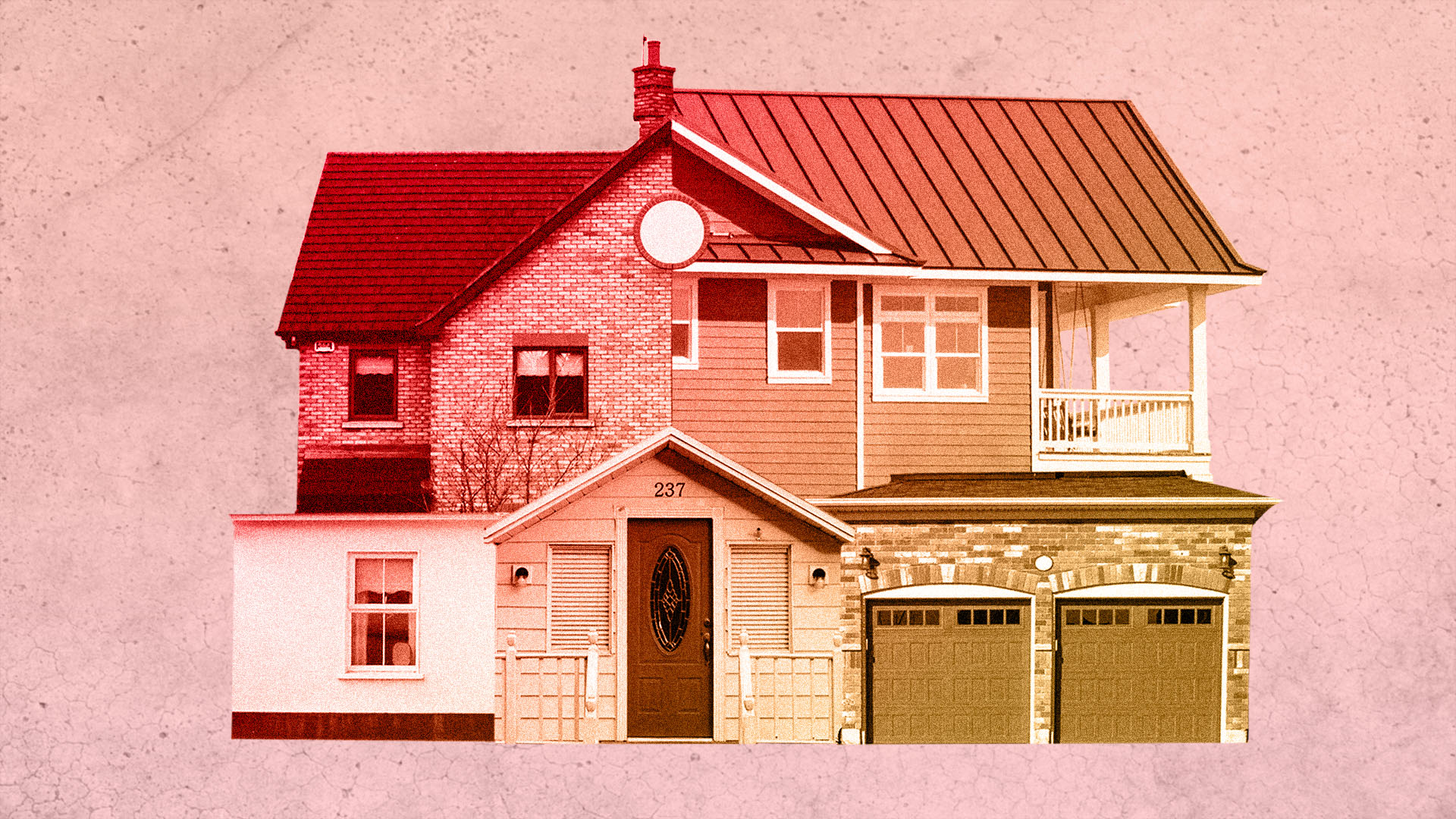
Illustration by Nina Whitley-Jones
When most Europeans think of housing for rent, they commonly imagine apartments, and the real estate investment industry has mostly followed suit. European rented residential property chiefly consists of blocks of flats, or what US investors term ‘multifamily’ housing.
But over the past 15 years North America has seen the rise of a new sector, so-called ‘single-family’ rentals, usually detached, individual family houses for rent, managed not by mom-and-pop investors, but in large portfolios by institutional landlords. And now the trend, accelerated by the effects of the pandemic, is taking hold in Europe too.
The genesis of US single-family rentals lies within the global financial crisis. The collapse of the sub-prime mortgage market led to mass foreclosures, with thousands of repossessed homes flooding onto the market. Many were snapped up by big opportunistic private equity investors. Meanwhile, advances in technology and connectivity were making it possible to aggregate, operate, and maintain large portfolios of individual properties, and a new asset class was born. Landlords scaled-up swiftly, acquiring tens of thousands of units. A wave of consolidation followed, which saw several huge deals, including the merger of private equity giants Starwood and Blackstone’s ownerships into a single 82,000-home platform.
Families wanted more outdoor space
The pandemic propelled the single-family market into a new phase. “Purpose-built single-family rental housing was something that really began with the COVID-19 era,” observes Florida-based Tim Gifford FRICS, managing director for CBRE Capital Advisors Latin America. Apartments could not provide the outside or working space that tenants increasingly craved, and more young families began to move out of inner cities to low-tax ‘red states’ in the southern Sun Belt.
“The sudden and steep demand caused developers to enter the build to rent market in droves as institutional capital was greenlighted at investment committees,” says Susan Tjarksen, managing director, strategic multifamily capital markets, at Cushman & Wakefield in the US. “It is estimated that 120,000 single-family build to rents will be built around the US in 2022. That is more than a 30% increase on 2021. And average US rental rates for those properties rose 15% year-on-year in 2021.”
Now the trend is beginning to take hold across the Atlantic. To date, the UK has seen the most rapid growth. Research carried out by Savills for the British Property Federation, published in July, records that single-family is the fastest-growing sub-sector of build to rent housing over the past 12 months with a 44% increase in the number of units in the pipeline, to 21,000.
Single-family pioneers in the UK have mainly adopted the purpose-built model. Private equity investors Sigma Capital was one of the first to recognise its potential. “There was nobody offering that type of accommodation – institutionally-owned, brand new, well-managed – anywhere. It seemed to us to be a massive gap in the marketplace,” says Sigma’s residential investment director Rob Sumner MRICS.
Between 2014 and 2017 Sigma built out the ‘Thistle’ portfolio of 918 rented family homes, mainly located in the north-west of England, on behalf of investor Gatehouse Bank. Sigma’s pitch to housebuilders was that they could get large schemes built quicker by pre-selling some of a development for single-family rental. “How do you get 1,000 units built? You do one third for sale, one third for a housing association, and one third for rent, and essentially you deliver three times as quickly,” argues Sumner.
Appeal to investors
In January 2021, Goldman Sachs bought the Thistle portfolio for around £150m, putting the sector on the map for UK investors. The appeal of ‘living’ sectors to property investors grew enormously during the pandemic, when they observed that income from such properties was more resilient than other real estate asset classes in the face of upheaval. Moreover, single-family rental income is regarded as more ‘sticky’ than multifamily, because renters tend to be families with children, who are less inclined to move than the single young professionals who often occupy apartment schemes.
Investor demand is crucial to the sector’s ability to compete for land with the for-sale market: “Yields have come in enormously in the last two years, and that has been a game-changer,” says Jonathon Ivory, managing director, single-family homes, at private rented sector housing provider Packaged Living. “The value that investors put on these assets, because of their more evolved understanding of how they perform, has narrowed the bid-ask spread between the vacant possession value of that home, and what we as an investor can pay, to within touching distance.”
Meanwhile tech-enabled firms are seeking to develop approaches that will enable them to aggregate single-family portfolios by acquiring existing UK properties. Bricklane, backed by £600m of capital from investment manager Moorfield Group, is one such firm. CEO Simon Heawood claims that the company’s Compass technology tool allows it to overcome the cost of operating at a large scale in such a granular market. “Harnessing hundreds of public and private data points to power our analysis, our algorithms value every property on the market in the UK daily to help inform our acquisitions,” he says.
Bricklane plans to amass 2,000 one to four-bedroom houses and flats by buying individual properties, carrying out refurbishment, including sustainability improvements, and then renting them out on one to three-year tenancies through management company Touchstone. Yet, the success of the approach in the UK is difficult to evaluate, because Bricklane is unwilling to share the number of transactions it has carried out.
At the moment, the UK single-family housing sector remains embryonic, at around 9,000 completed units. But prospects for growth will be improved by the end of the government Help to Buy programme in 2023, says Richard Valentine-Selsey, research director at Savills. “Help to Buy has meant the housebuilders have had no incentive to diversify. Wherever they build a house, as long as it’s under the scheme’s price cap, they can pretty much sell it, so the challenge for investors has been accessing opportunities. That will start to change within the next 18 months.”
Whether single-family rental will make big inroads in the rest of Europe remains to be seen. Some investors are funding purpose-built schemes in Spain, he says. “But one of the barriers to many markets in continental Europe is that most renters tend to live in flats.”
What is the scope for expansion? Ivory says: “The value of the UK residential rental market is more than £1tr, more than 60% of rental stock is suburban housing, and the institutional ownership of single-family rental is less than 1%. If all we did was just consolidate some of that, it is hard to describe an upper limit.”
But while renting has become more accepted, particularly among the young, home ownership remains the aspiration for many. “Irrespective of how successful we and other investors are, the tenure of choice will always be home ownership, and that will remain the majority of the stock.”

“How do you get 1,000 units built? You do one third for sale, one third for a housing association, and one third for rent” Rob Sumner MRICS, Sigma Capital
Home computing: how technology enables single-family rented residential portfolios
Acquisition
Software with artificial intelligence capabilities can be used to scan residential property listing services, evaluating viability according to price, age refurbishment cost, and socio-economic criteria such as proximity to schools, local employment rates and crime statistics. This produces a consistent automated valuation.
In some cases, the programme automatically makes an offer for a suitable property and then dispatches a human inspector to carry out further evaluation.
Marketing
Owners can offer virtual online tours, as well as ‘self-showing’, by putting a digital lock-box on the home, with potential tenants receiving a code that allows them to access the property for viewing without the need for an agent to show them around. Application and credit vetting processes can then be handled online.
Operations and maintenance
Mechanical and electrical equipment and other major building components can be ‘tagged’ electronically to forecast their useful service life and manage the replacement cycle. Initial service calls can be handled by an AI-driven virtual assistant. Tech platforms enable real time data sharing between office staff and maintenance technicians to increase efficiency and ensure repair vans are dispatched ready-stocked with the right inventory.



